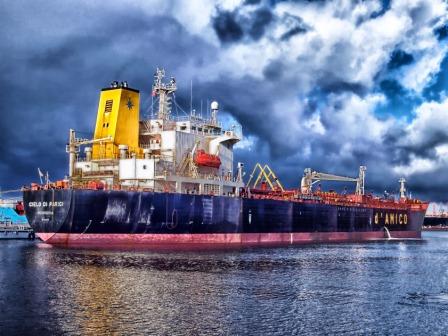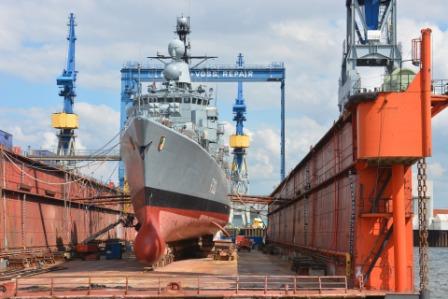It must be remembered that a ship is a floating object and to calculate its displacement, it is necessary to calculate its underwater volume when multiplied by the density of the water in which the ship floating.
For the purpose of standardization, the density of fresh water is taken as 1.000 and that of seawater is taken as 1.025.
In practice, the density of the dock water may vary from these values and even at the same place the density may vary due to change of tide.
Hence in order to get the correct displacement, it is important to take the density of the water the ship is floating at the time of taking the draft.
REMEMBER
- Density is less (close to fresh mean water) the mean draft will be more.
- Density is more (close to salt water) the mean draft will be less. For the same ship having the same displacement.
The ship’s hydrostatic tables have displacement calibrated for densities of 1.000 and 1.025 so a density correction has to be applied to displacement for any densities apart from those calibrated.
Taking density
- It is measured by an instrument known as a hydrometer.
- Metal or glass hydrometers are available and they are made to float in the sample water and the reading at the surface gives the density.
- This density is used to calculate the dock water allowance from the ship’s freshwater allowance (FWA).
The formula for calculating dock water allowance:
Dock water allowance (in mm) = FWA (in mm) x 1025 – (measured dock water RD)
Some hints on taking a water sample for measuring density:
- The water sample should be taken as close as possible to the time when the draft is read.
- Take several samples of water from all around the ship and at several depths between the surface and the deepest draft.
- Do not take samples near the discharges of engine room cooling water, ballast or from any other pipes on the ship.
- It is possible sometimes that the water is layered. That is samples might have different densities with fresh water floating on top of denser seawater. In such cases, a large number of samples from different depths will be required in order to establish the most accurate average possible for the purpose of taking water samples. Several patent Sample buckets are available in the market for this purpose. A ship may not have a Sample bucket, so the officer on watch should make use of the ordinary clean metal bucket to take samples.
- Ensure that when taking the sample, the bucket is lowered well below the waterline.
Procedure for taking density:
1)After taking the sample – rinse out the sample jar with part of the sample. The sample jar should be a glass jar of at least 5 cm diameter.
2)The jar should be deep enough so that the hydrometer floats at least 2.5 cms clear of the bottom.
3)The jar should be nearly full with sample water and the observer’s eye should be in level with the top of the jar to avoid parallax.
4)Hold the hydrometer vertically by the top of the stem and gently lower it into the sample jar until it floats freely.
5)It is a good practice to spin the hydrometer to ensure that it is floating freely.
6)Wait until the water and the hydrometer are steady and read off the hydrometer markings where the water surface meets the stem, avoiding the parallax.
Hope you like this info.Continue reading and please share if you like this info…..





Dock water is also:
a) water of density > 1.025 T/m3 where DWA < 0 applies;
b) water of density FWA applies.
Regards